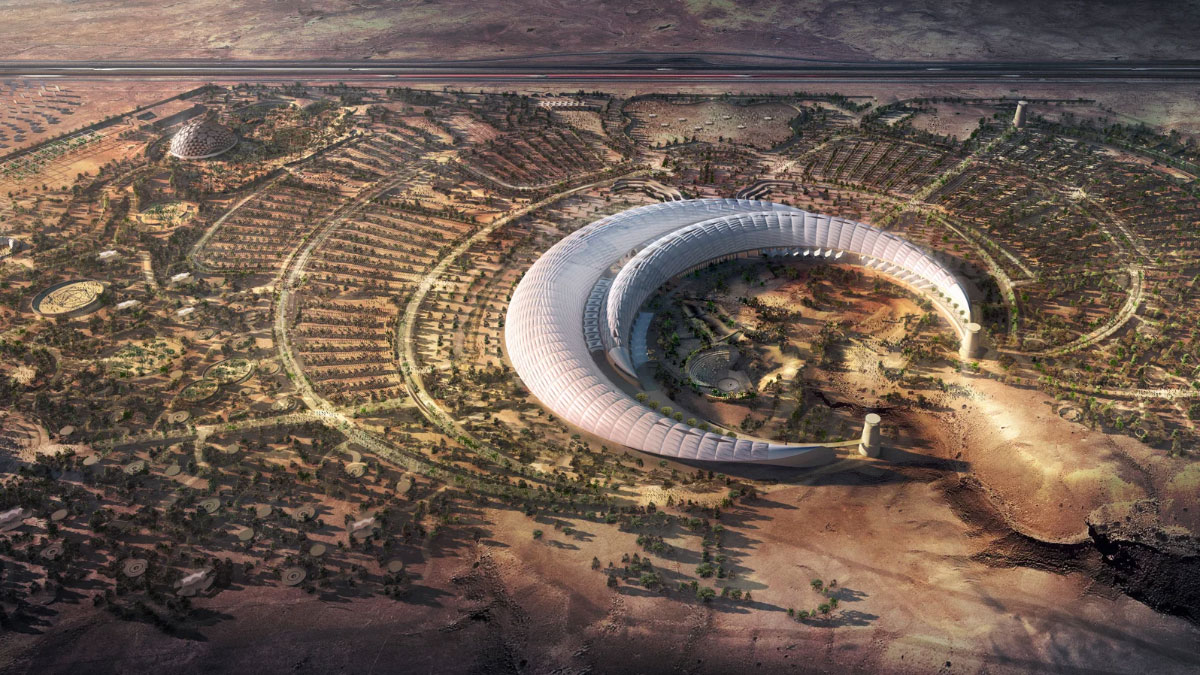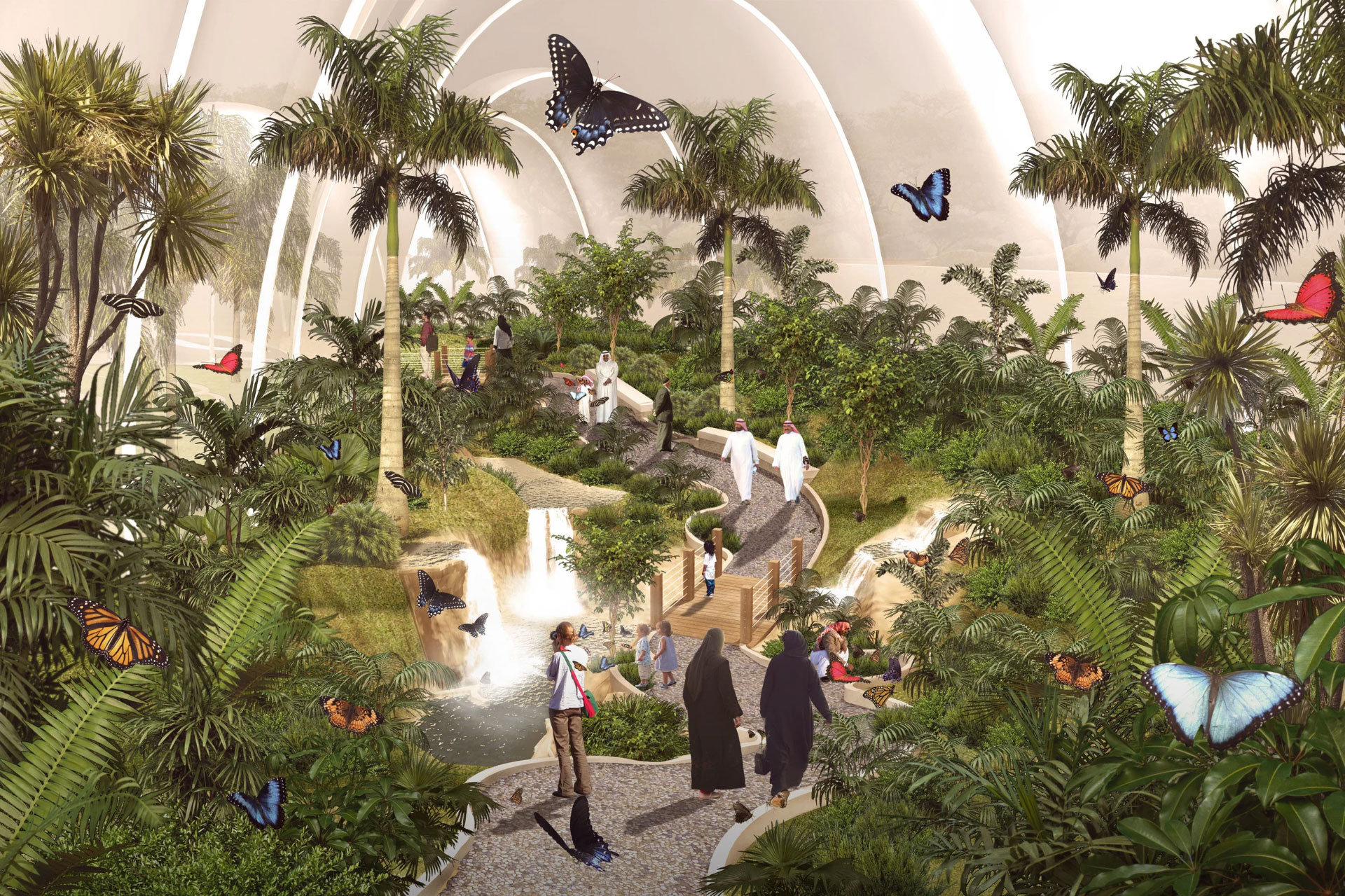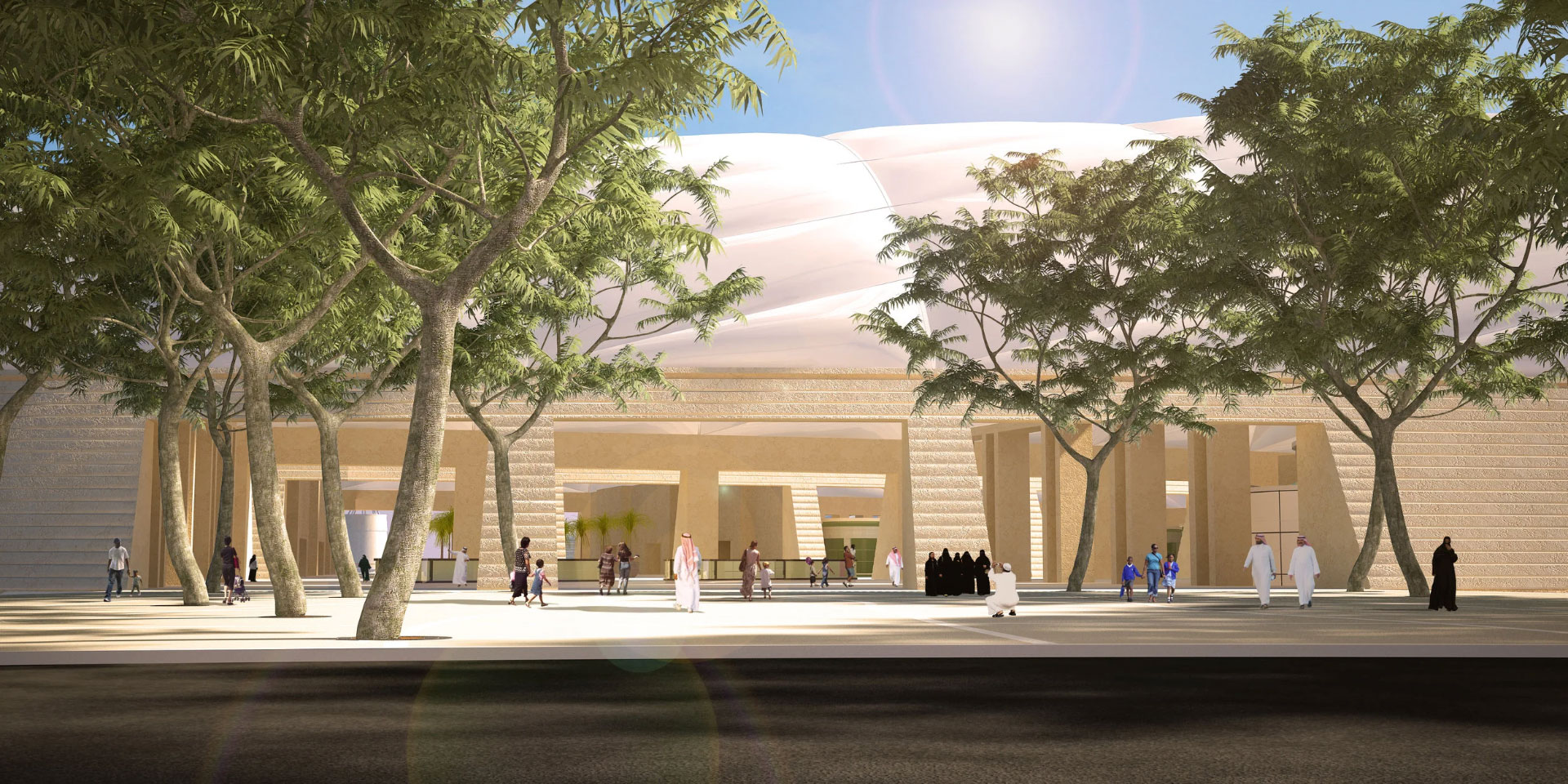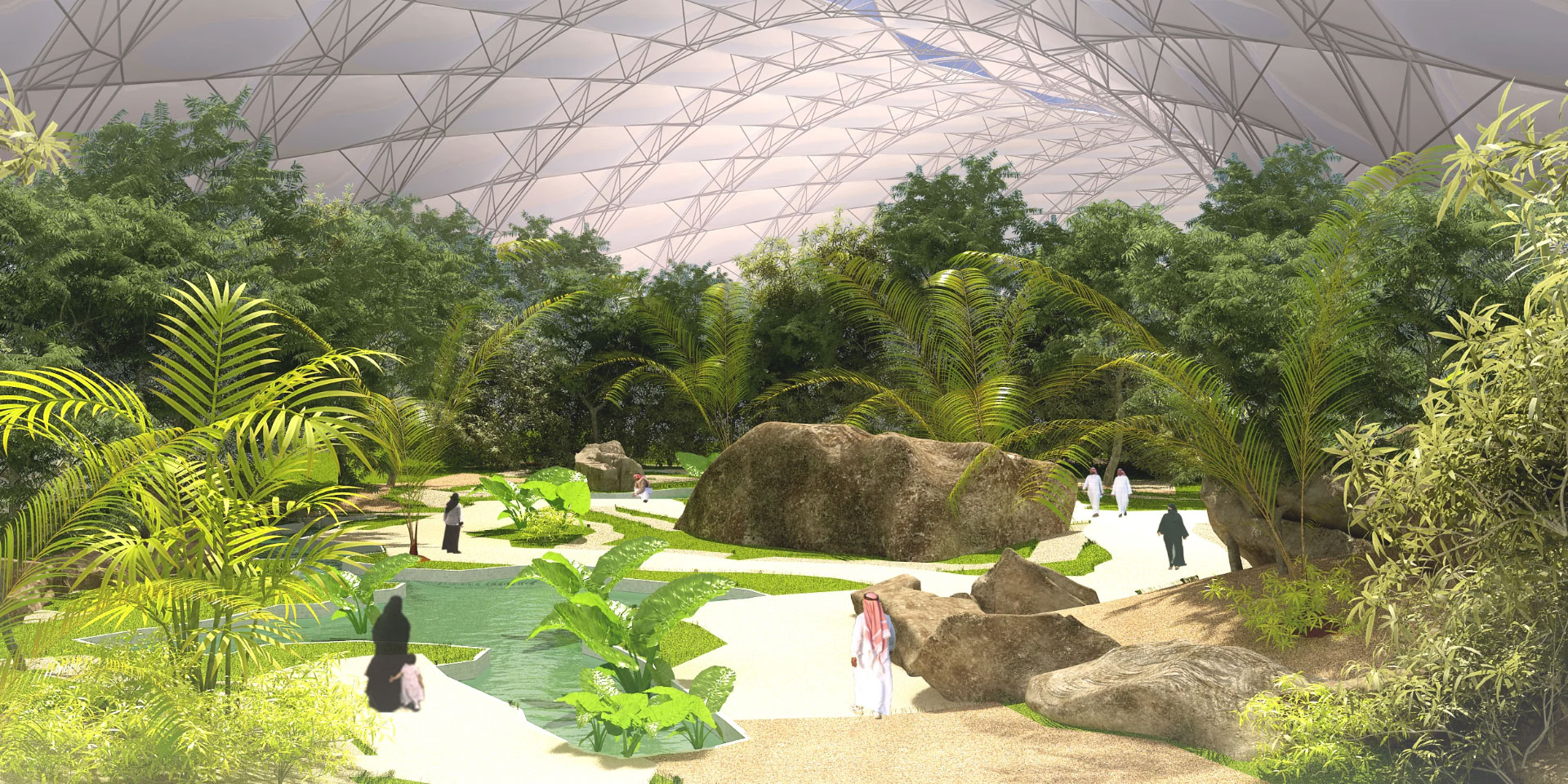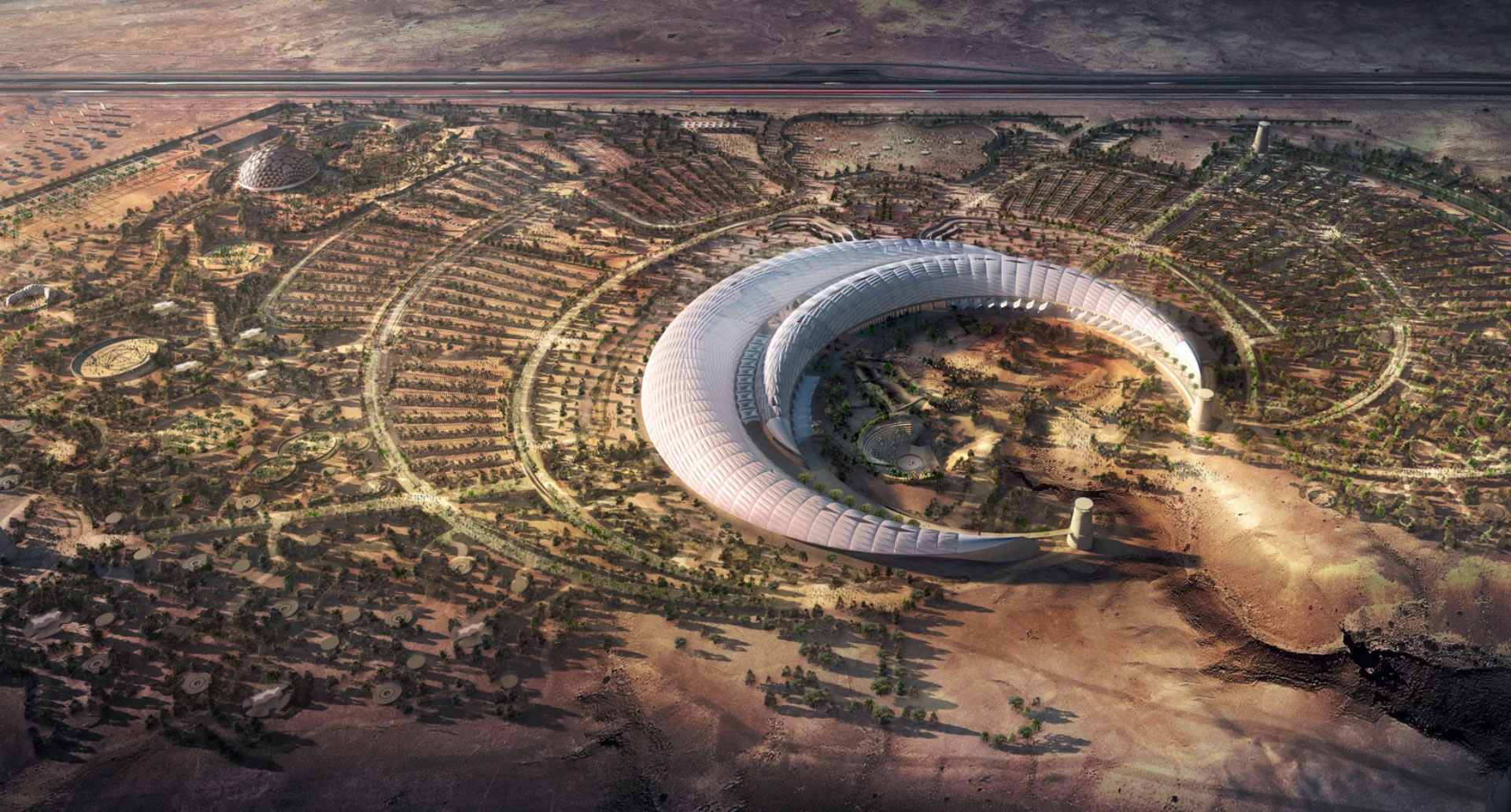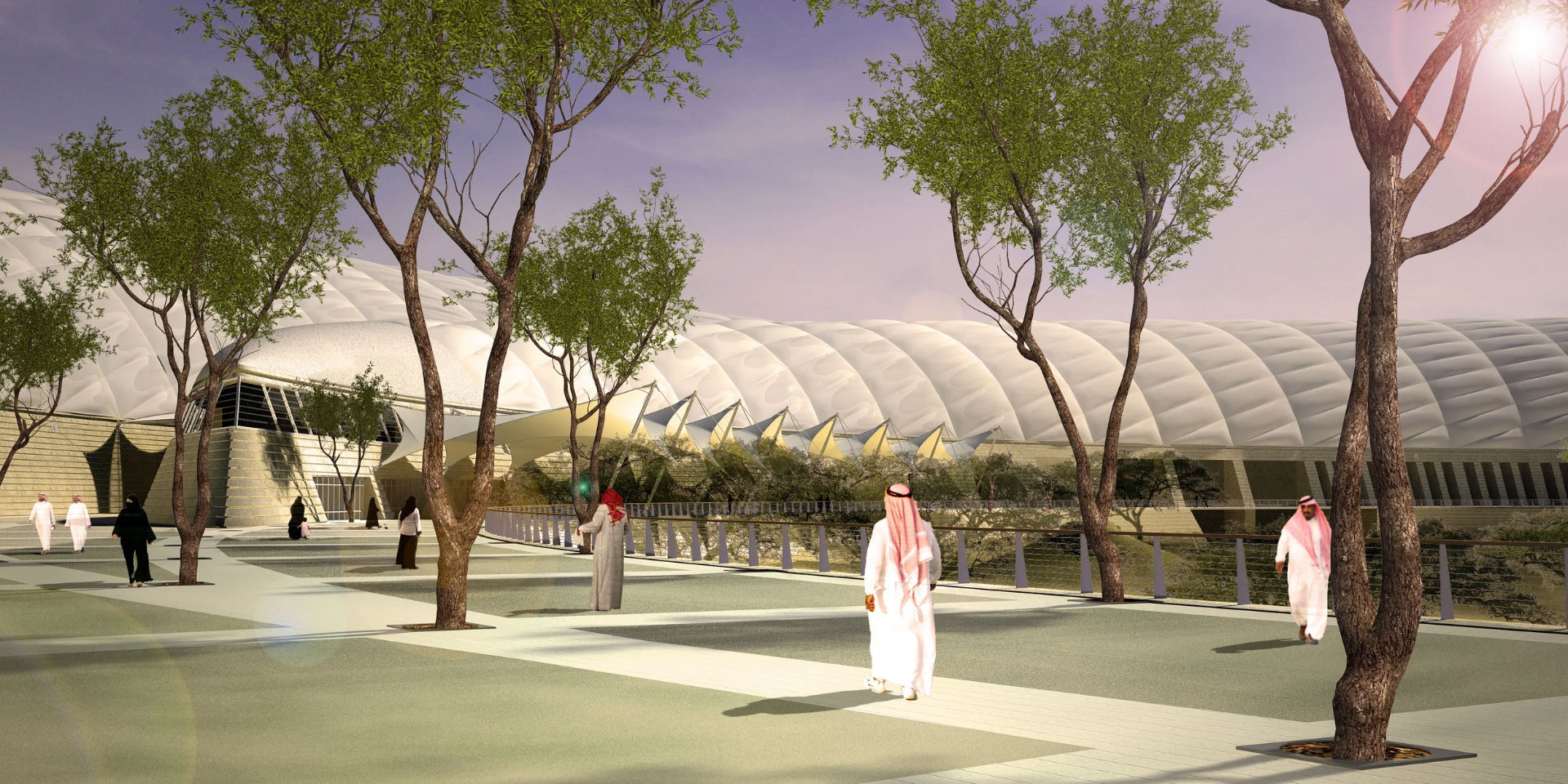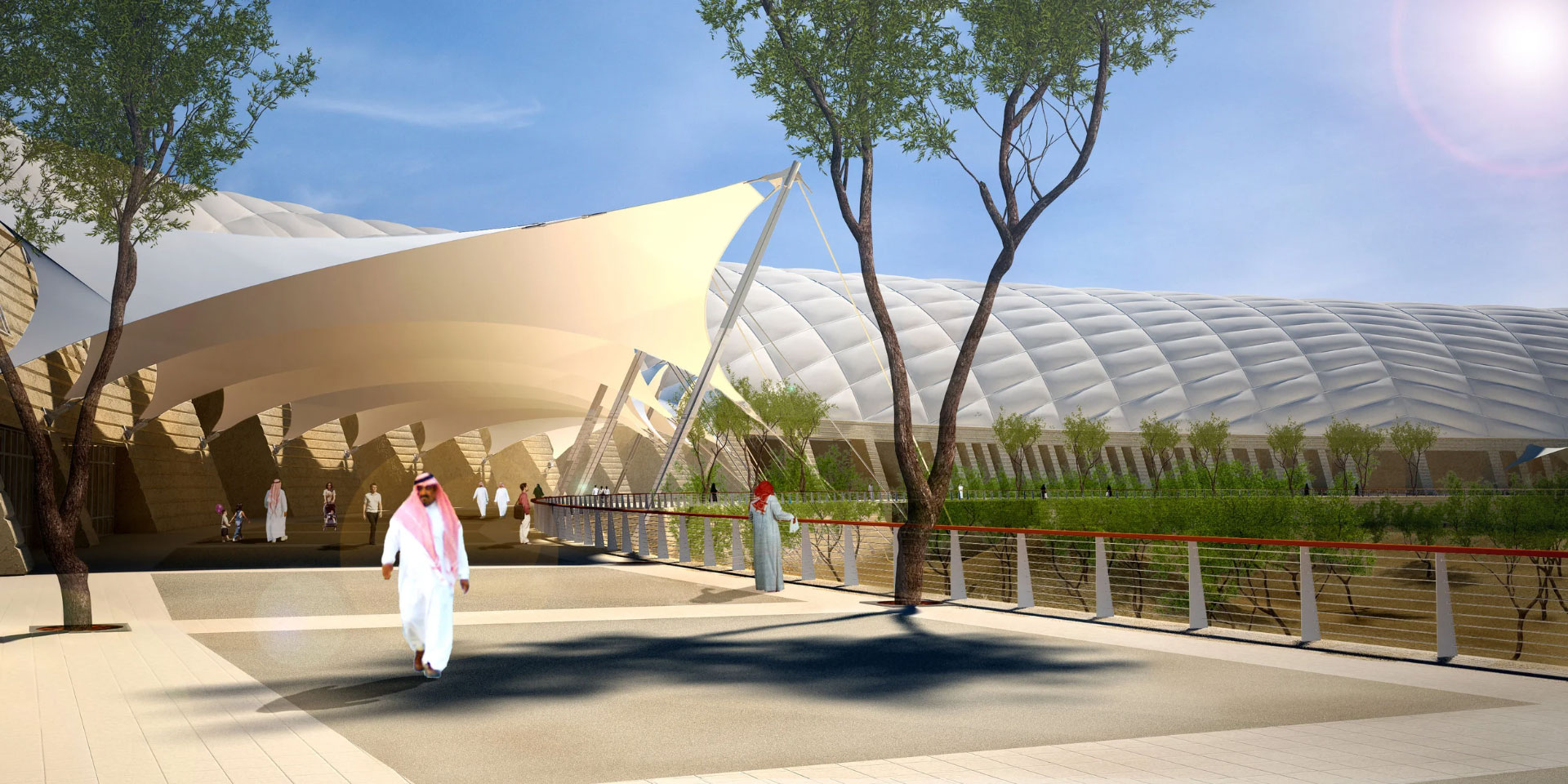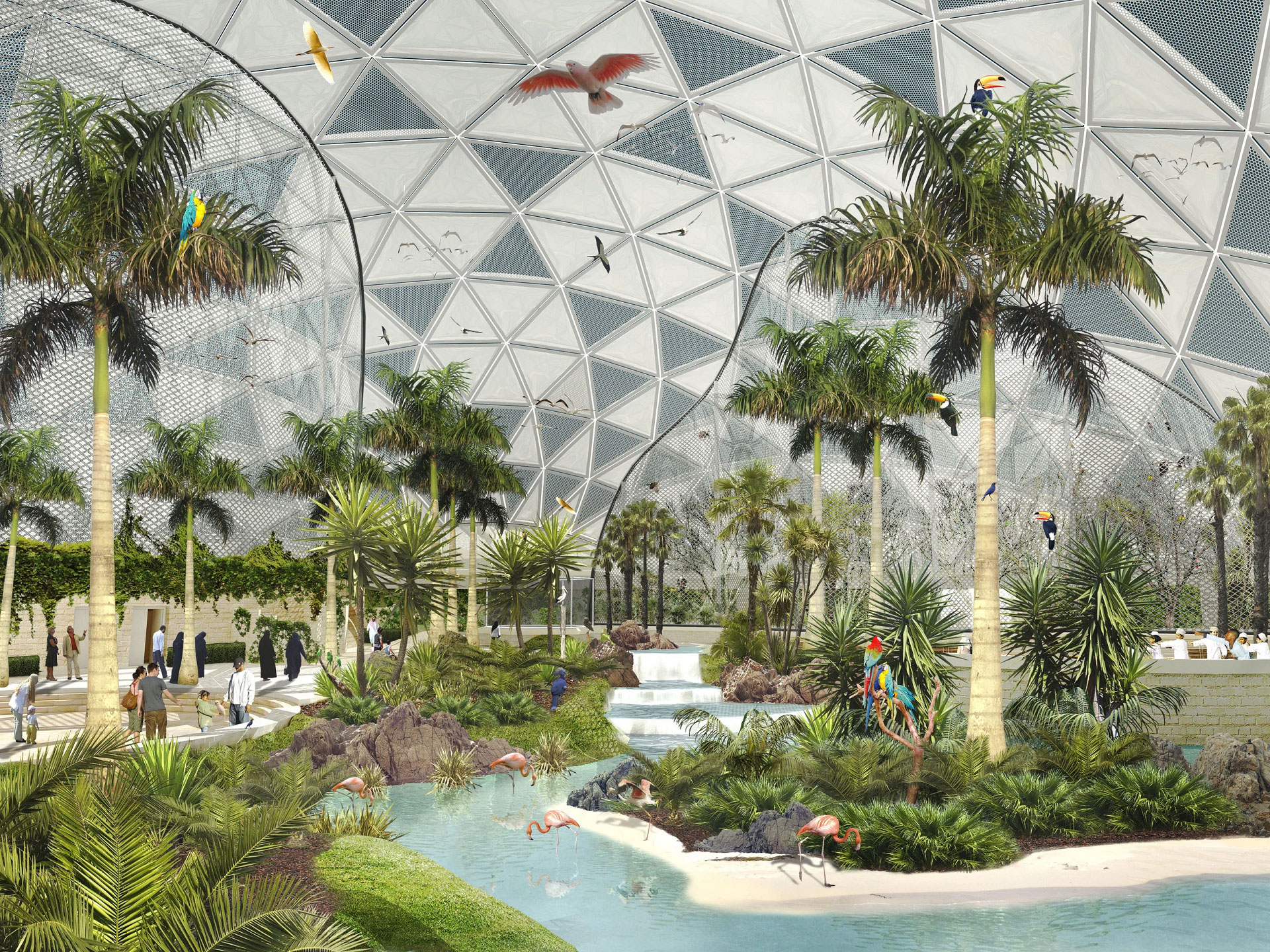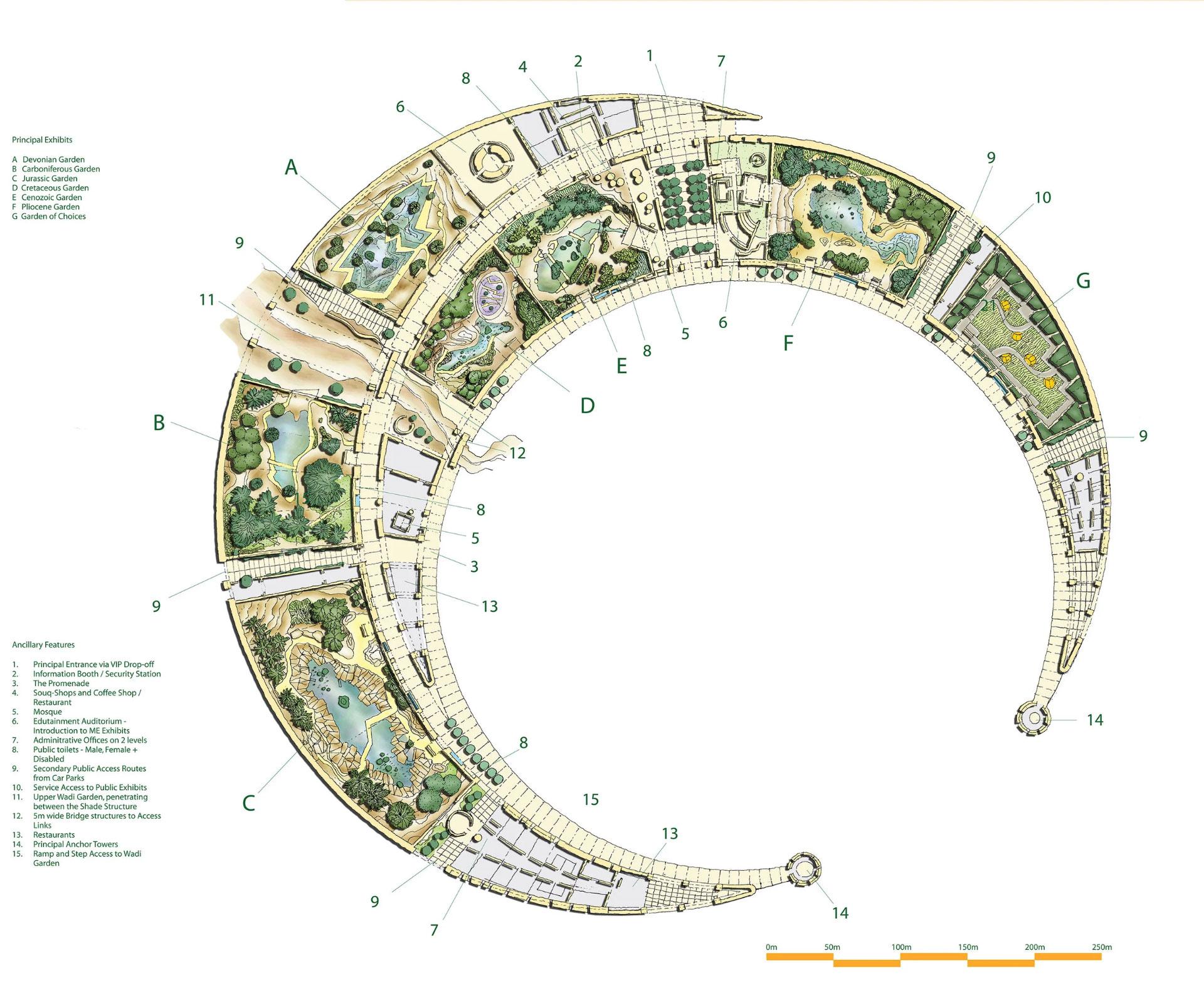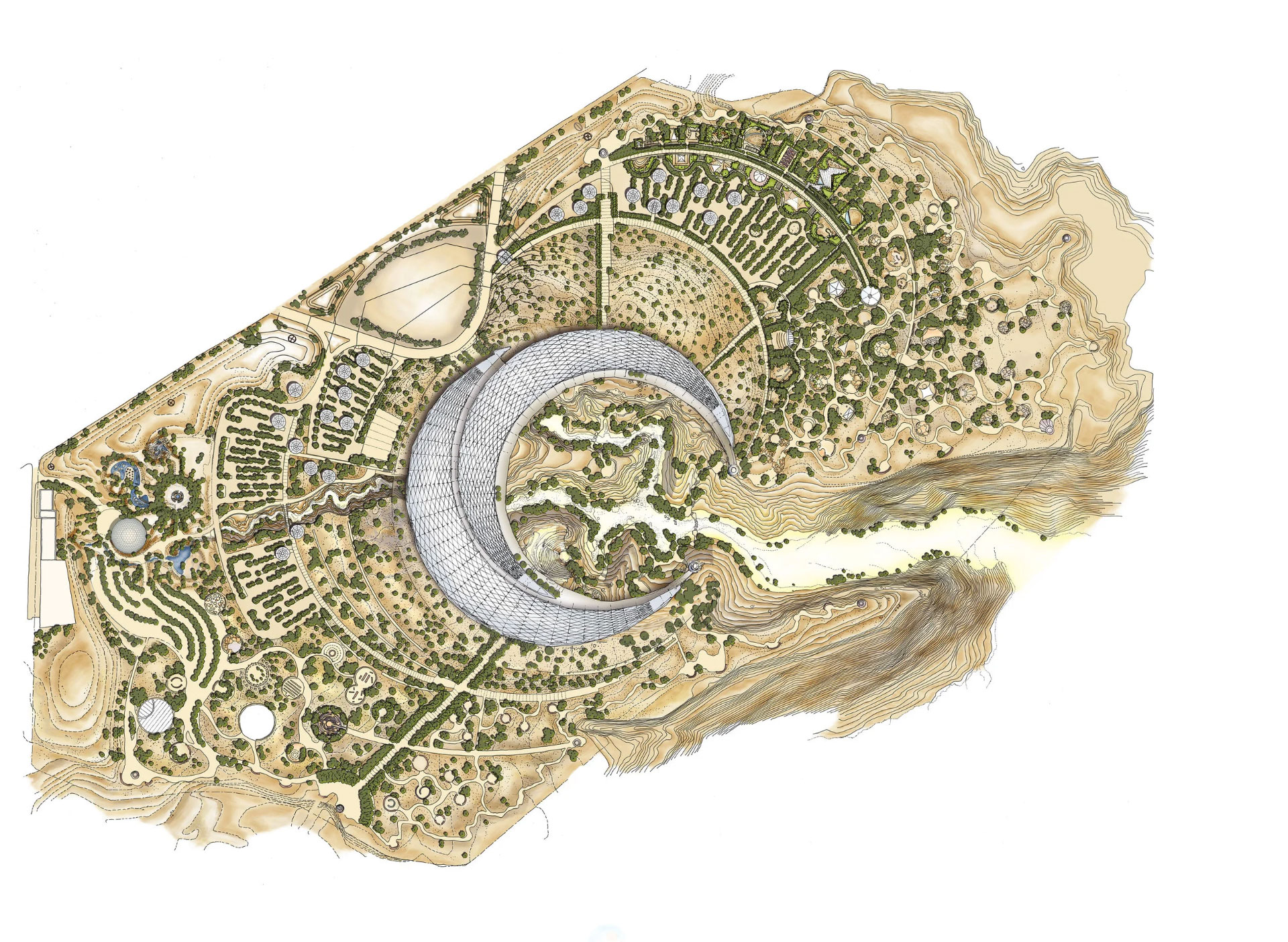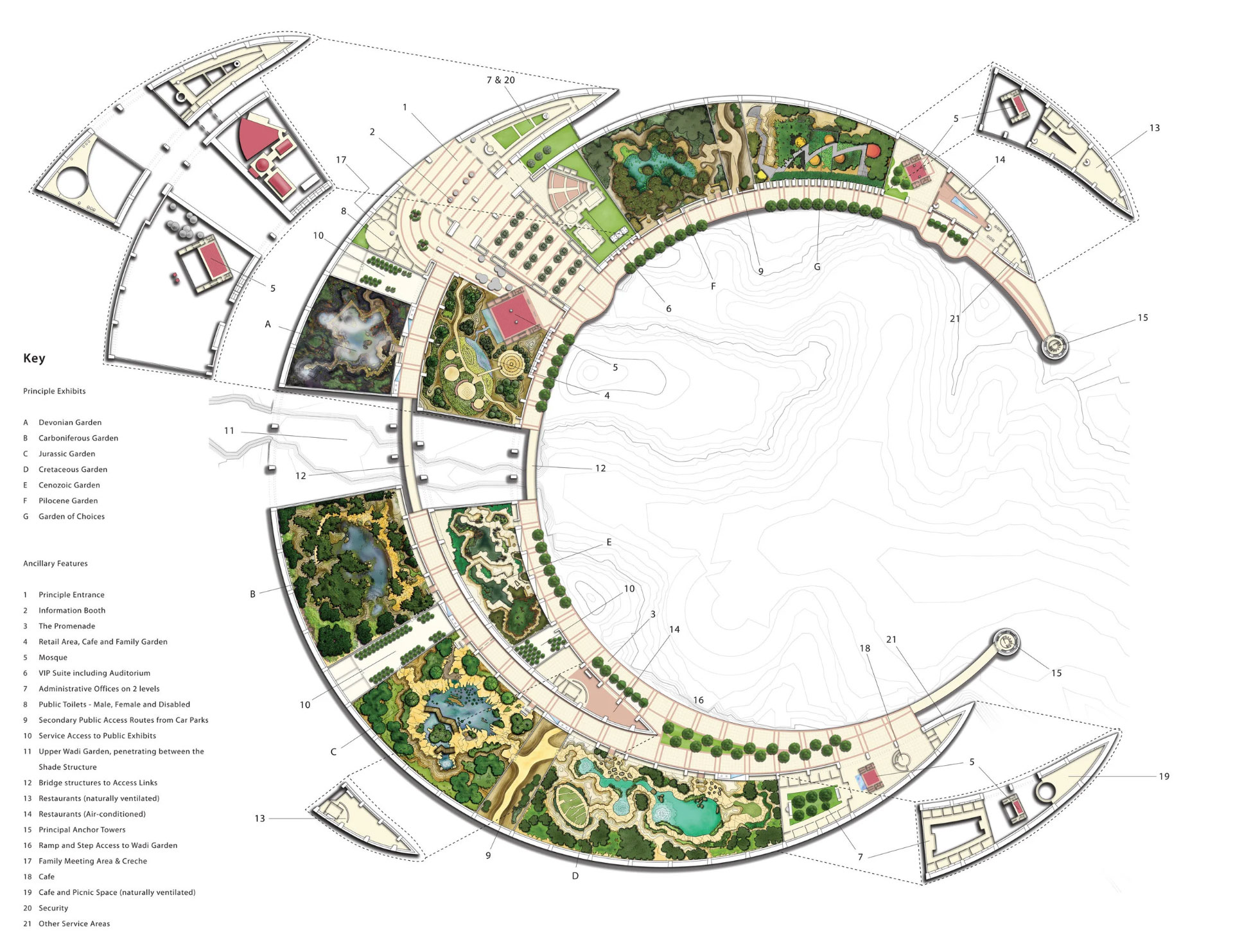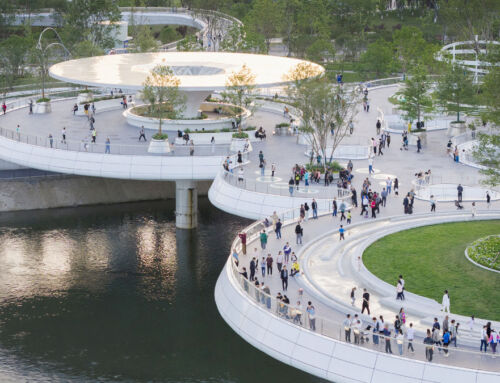In the desert landscape of central Saudi Arabia, on the outskirts of its capital, Riyadh—just 15 km from the site of Qiddiya City, the country’s large leisure and entertainment centre—a unique project is taking shape: the King Abdullah International Gardens (KAIG). The arid and hostile environment in which these large botanical gardens are located makes sense, precisely because of one of their main purposes: to show the fragility and resilience of nature, as well as the profound climatic history of the region, which was not always a desert.
In terms of architecture, the project consists of two gigantic greenhouses in the shape of two intertwined crescents, with a combined surface area of 9 hectares, each of which will house a biome, in other words, an ecological community of characteristic vegetation and fauna, determined by climate and geography. However, climate and geography will not be the only determining factors in the King Abdullah International Gardens; time will also take on a special character in each biome as the common thread of the exhibition. Inside these crescents, the environmental conditions of different geological eras will be accurately recreated.
In this way, specific plant species, survivors from each period, will offer visitors an immersive experience that symbolises a journey through time. The tour, like a timeline transporting visitors through the evolution of terrestrial flora, will take them from the Devonian period 400 million years ago, through the Carboniferous, Jurassic and Cretaceous periods, to the Cenozoic era. The visit will conclude in the Garden of Choices, a space dedicated to education and reflection.
The Ministry of Municipal, Rural Affairs and Housing (MOMRAH) awarded the contract for the development of the King Abdullah International Gardens, valued at around €360 million, to the local group Zaid Alhussain & Brothers. The completion of the works and the opening of the botanical garden to the public are scheduled for autumn 2025 — that is, very soon — when it will undoubtedly become a cultural and educational landmark for Riyadh and the world. Those responsible for the project put it this way in their online presentation: more than just a botanical garden or a green space, it is “a gift from a city to a King, from a King to his people and from the people to Mankind”.


